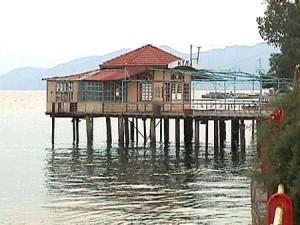Aedipsos History
Its cosmopolitan atmosphere combined with the healing spas have attracted renowned politicians, artists, writers and other notable people like Farouk, Winston Churchill, Aristotle Onassis, Maria Callas, Greta Garbo and Omar Sharif.

Aedipsos (Aedepsos or Edipsos) has been one of the most important healing Spas in the Eastern Mediterranean Sea region in the last four millenia. Even though few travellers from other countries have ever heard of it, the cosmopolitan atmosphere combined with the healing spas have attracted renowned politicians, artists, writers and other notable people like Farouk, Winston Churchill, Aristotle Onassis, Maria Callas, Greta Garbo and Omar Sharif. But it is mentioned in the works of Aristotle in his Meteorologica.
Plutarch describes the social life that had developed at Aedipsos, stressing the pleasant stay and entertainment offered in the town, and its excellent foods that included fish and poultry. Strabo refers to the appearance of new springs and healing properties thereof.
Aedipsos had long been famous for its coppersmith’s workshops, and perhaps that explains why it was one of the few towns to mint its own coin. The said coin, which is depicted in Regas Ferraeos' Charta, bears the image of a crab on one side and a fish on the other, thus symbolizing the abundant sea life of the area.
In Roman times the area flourished and its healing waters were visited by the emperors Hadrian, Septimus Severus and Marcus Aurelius. The baths from the Roman period are the ones best preserved and are known as Syllas Baths (Syllas Thermae), after the Roman General.
During the Byzantine era, following pressure from the Church, it was destroyed for being a centre of paganism, though it had been visited by the Emperors Theodosius and Constantine the Great.
|
|



